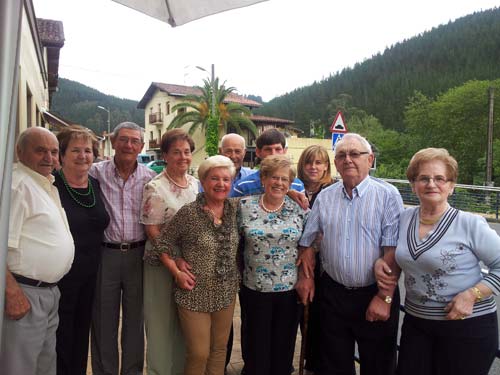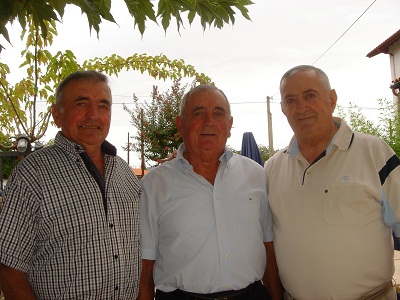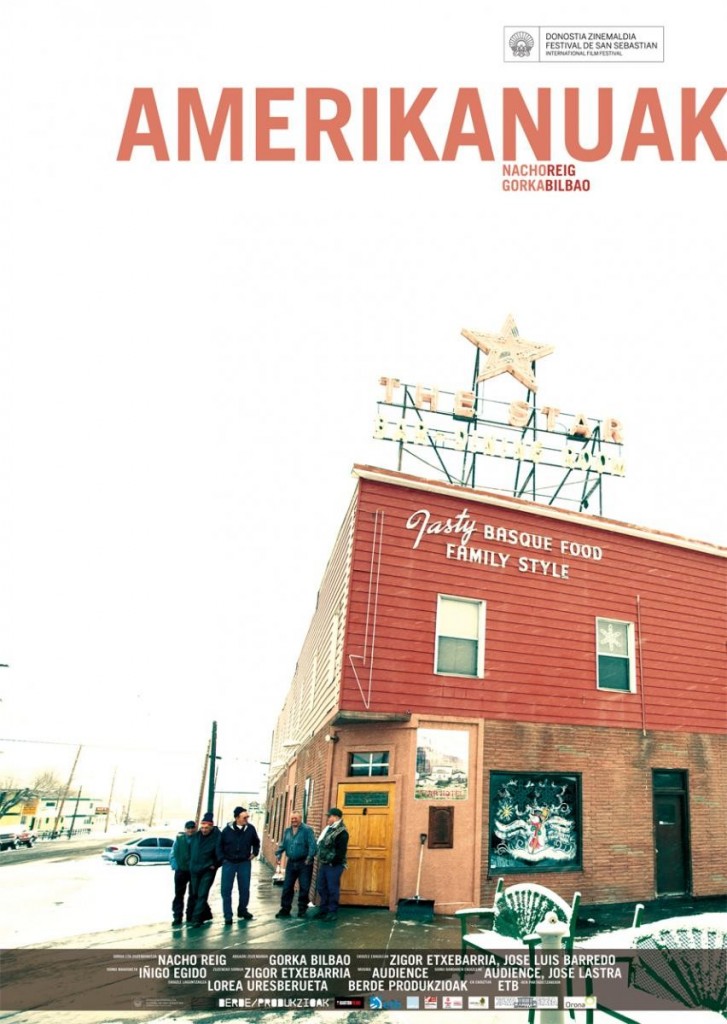“Somos la memoria que tenemos y la responsabilidad que asumimos, sin memoria no existimos y sin responsabilidad quizá no merezcamos existir”
José Saramago (Cuadernos de Lanzarote, 1997)
Ante el relativo grado de desconocimiento de la sociedad actual—particularmente de las generaciones más jóvenes—sobre el hecho de la emigración vasca, y ante la inevitable desaparición de la última generación histórica de emigrantes y exiliados y de aquellos que en su día retornaron, desde la iniciativa Bizkailab de la Universidad de Deusto nos propusimos realizar un estudio urgente sobre la memoria e historia del país, empezando por el Territorio Histórico de Bizkaia. La finalidad era, y sigue siendo, la de entender y difundir la identidad y cultura de un colectivo, a través del testimonio oral de sus protagonistas—tanto de aquellos que en su día emigraron como de los que regresaron—que hasta cierto punto, a día de hoy, permanece relegado al olvido.
 Celebración del tradicional encuentro anual vasco-australiano en su vigesimocuarto aniversario, Oleta (Bizkaia). Fila superior: Mario Satika, Begoña Barrutia, Koldo Goitia, Maribi San Antonio, José Badiola, Iñaki Etxabe y Anne Etxabe. Fila inferior: Mila Aboitiz, Mila Aberasturi, José Ignacio Etxabe y Angelita Fundazuri (Fotografía de Pedro J. Oiarzabal).
Celebración del tradicional encuentro anual vasco-australiano en su vigesimocuarto aniversario, Oleta (Bizkaia). Fila superior: Mario Satika, Begoña Barrutia, Koldo Goitia, Maribi San Antonio, José Badiola, Iñaki Etxabe y Anne Etxabe. Fila inferior: Mila Aboitiz, Mila Aberasturi, José Ignacio Etxabe y Angelita Fundazuri (Fotografía de Pedro J. Oiarzabal).
Durante meses, hemos tenido la oportunidad de conocer “mundos invisibles”, hilvanados por memorias de otros tiempos, que se entrelazan con las de miles y miles de vascos que por una razón u otra tuvieron que abandonar Euskal Herria, y que en algunos casos, tras décadas en el extranjero, decidieron regresar a su hogar. ¿Qué es lo que quedaba del hogar? ¿Cómo fueron recibidos a su regreso? ¿Qué fue de aquellos vascos que regresaron tras la larga noche del franquismo, tras las interminables jornadas cortando caña de azúcar en Australia o en la soledad más absoluta pastoreando en las colinas del Oeste Americano? ¿Qué ha sido de su historia, de nuestra historia colectiva, del patrimonio cultural inmaterial que conforman los miles de fotogramas que compone la historia más gráfica de la emigración y del retorno a Euskal Herria?
¿Quién no conoce a algún familiar, lejano o no, o ha oído hablar de un vecino o un amigo que probó fortuna como cesta-puntista en el Oriente o en las Américas; de un exiliado; de un pastor; de un cortador de caña; de un hijo o hija de aquellos que se fueron para no volver más? Amerikanuak, Australianuak, Venezolanos, Argentinos, Uruguayos…vascos y vascas con acentos e historias sin contar que conviven entre nosotros y que comparten culturas, lenguas, vivencias de emigración y experiencias de retorno—unas más felices que otras, no carentes de incomprensiones mutuas, y a veces incluso de rechazo. Conforman mundos que nos transportan a otros tiempos y espacios, mundos invisibles, virtualmente desconocidos, pero reales. Sus historias son indispensables para comprender nuestro pasado y nuestro presente como un pueblo abierto al mundo.
 Encuentro anual de los Amerikanuak, Arrosa (Nafarroa Beherea). De izquierda a derecha Jean Luis Oçafrain, Gratien Oçafrain y Michel Duhalde; emigrantes retornados de Estados Unidos (Fotografía de Pedro J. Oiarzabal).
Encuentro anual de los Amerikanuak, Arrosa (Nafarroa Beherea). De izquierda a derecha Jean Luis Oçafrain, Gratien Oçafrain y Michel Duhalde; emigrantes retornados de Estados Unidos (Fotografía de Pedro J. Oiarzabal).
El estudio nos llevó a recorrer numerosas localidades del país y nos acercó a paisajes del Oeste Vasco-Americano, pudiendo realizar más de 46 horas de grabación a personas cuyas vidas les condujo a más de 12 países en América, Asia, Europa y Oceanía. Hoy en día, la historia de Euskal Herria se enriquecería aun más si cabe incorporando las páginas sueltas escritas por vascos y vascas en lugares tan dispares como North Queensland, Idaho, Nevada, Buenos Aires, Caracas, Montevideo, México D.F., Filipinas, Cuba, Yakarta y un largo etcétera. Añadamos esas páginas al libro de nuestra historia y démoslas a conocer. Apenas hemos empezado a vislumbrar las raíces profundas del fenómeno de la emigración, y sobre todo del retorno, que existen en nuestra sociedad, y de su significado histórico en relación al progreso y al bienestar que a día de hoy disfrutamos, y que es en cierta medida, también gracias a los sacrificios y esfuerzos de aquellos que tuvieron que abandonar su tierra.
El vídeo “Gure Bizitzen Pasarteak: Erbeste, Emigrazio eta Itzulera Bizkaira—Fragmentos de Nuestras Vidas: Exilio, Emigración y Retorno a Bizkaia” muestra una selección de entrevistas realizadas en 2012 a vascos que en su momento fueron refugiados, exiliados, emigrantes y que a día de hoy han regresado al país. Nos relatan con sus propias palabras sus historias de vida, entremezclándose los discursos y testimonios más racionales con los más profundos y emotivos.
Es ahora más que nunca necesaria la implicación de la sociedad, sus instituciones y agentes sociales, y de modo especial la de la población emigrante, la retornada y sus familiares para que se constituyan en agentes activos y participes en la propia reconstrucción del fenómeno histórico emigratorio vasco. Tal y como dijo, en su día, el Premio Nobel de Literatura José Saramago “hay que recuperar, mantener y transmitir la memoria histórica, porque se empieza por el olvido y se termina en la indiferencia”.
[Si nació en Bizkaia y por cualquier motivo decidió emigrar a cualquier parte del mundo, y ha regresado a Euskadi, escribanos a bizkaia.retorno@gmail.com Por el contrario si conoce a alguien que emigró y ha regresado hágale llegar este mensaje. Eskerrik asko!]



